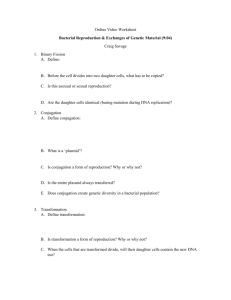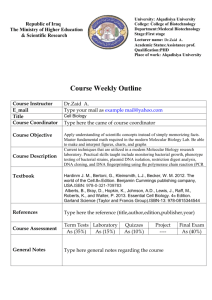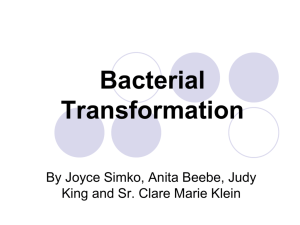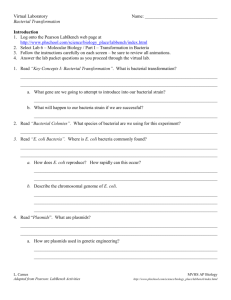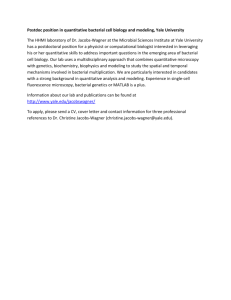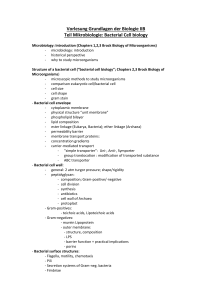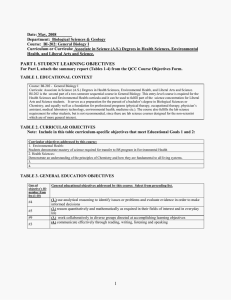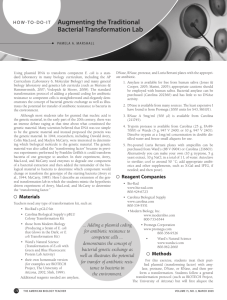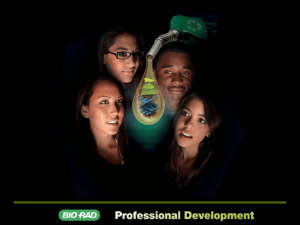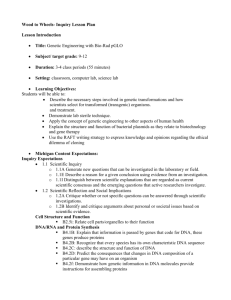Lesson Description - Life Sciences Outreach Program
advertisement
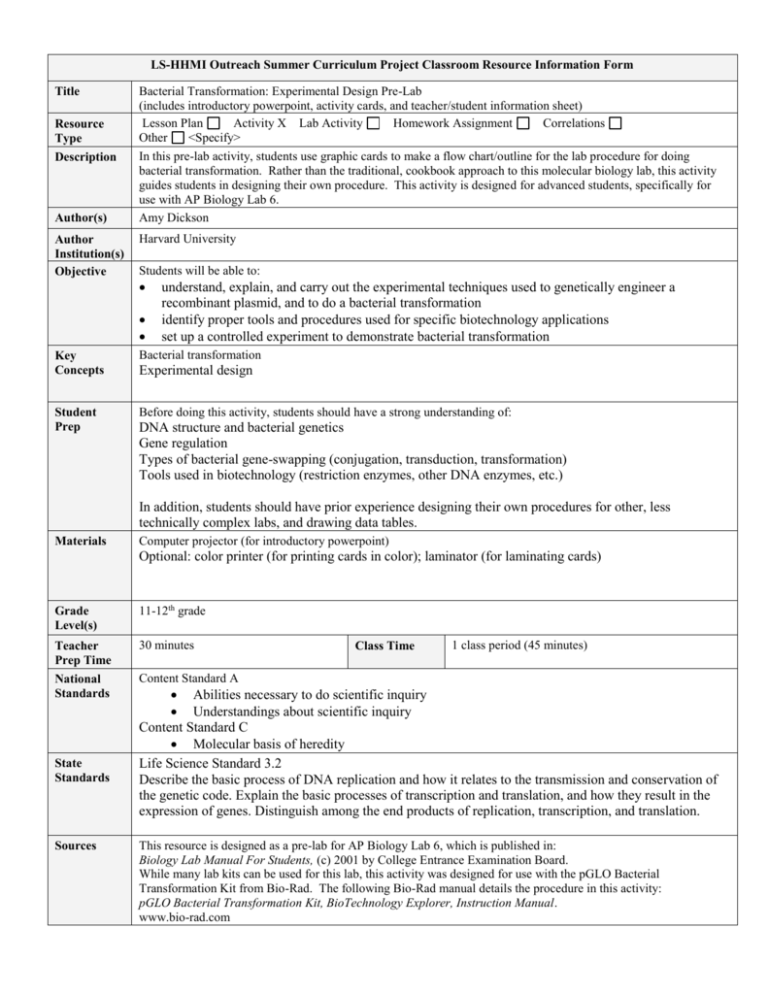
LS-HHMI Outreach Summer Curriculum Project Classroom Resource Information Form Title Resource Type Description Author(s) Author Institution(s) Objective Bacterial Transformation: Experimental Design Pre-Lab (includes introductory powerpoint, activity cards, and teacher/student information sheet) Lesson Plan Activity X Lab Activity Homework Assignment Correlations Other <Specify> In this pre-lab activity, students use graphic cards to make a flow chart/outline for the lab procedure for doing bacterial transformation. Rather than the traditional, cookbook approach to this molecular biology lab, this activity guides students in designing their own procedure. This activity is designed for advanced students, specifically for use with AP Biology Lab 6. Amy Dickson Harvard University Students will be able to: understand, explain, and carry out the experimental techniques used to genetically engineer a recombinant plasmid, and to do a bacterial transformation identify proper tools and procedures used for specific biotechnology applications set up a controlled experiment to demonstrate bacterial transformation Key Concepts Bacterial transformation Student Prep Before doing this activity, students should have a strong understanding of: Experimental design DNA structure and bacterial genetics Gene regulation Types of bacterial gene-swapping (conjugation, transduction, transformation) Tools used in biotechnology (restriction enzymes, other DNA enzymes, etc.) In addition, students should have prior experience designing their own procedures for other, less technically complex labs, and drawing data tables. Materials Computer projector (for introductory powerpoint) Optional: color printer (for printing cards in color); laminator (for laminating cards) Grade Level(s) 11-12th grade Teacher Prep Time 30 minutes National Standards Content Standard A State Standards Sources Class Time 1 class period (45 minutes) Abilities necessary to do scientific inquiry Understandings about scientific inquiry Content Standard C Molecular basis of heredity Life Science Standard 3.2 Describe the basic process of DNA replication and how it relates to the transmission and conservation of the genetic code. Explain the basic processes of transcription and translation, and how they result in the expression of genes. Distinguish among the end products of replication, transcription, and translation. This resource is designed as a pre-lab for AP Biology Lab 6, which is published in: Biology Lab Manual For Students, (c) 2001 by College Entrance Examination Board. While many lab kits can be used for this lab, this activity was designed for use with the pGLO Bacterial Transformation Kit from Bio-Rad. The following Bio-Rad manual details the procedure in this activity: pGLO Bacterial Transformation Kit, BioTechnology Explorer, Instruction Manual. www.bio-rad.com References BioBusiness: How Businesses Use Recombinant DNA Technology to Meet Customers’ Needs, (c) 2005 by DESTINY – UNC-Chapel Hill’s Traveling Science Learning Program. www.destiny.unc.edu Assessment Post lab assessment could include: Analysis questions from AP Biology Lab 6 Formal written lab report, including an abstract. The 2007 AP Biology Open Response Question #4, which asks students to explain the process and potential uses of bacterial transformation.

